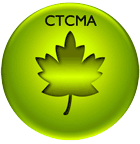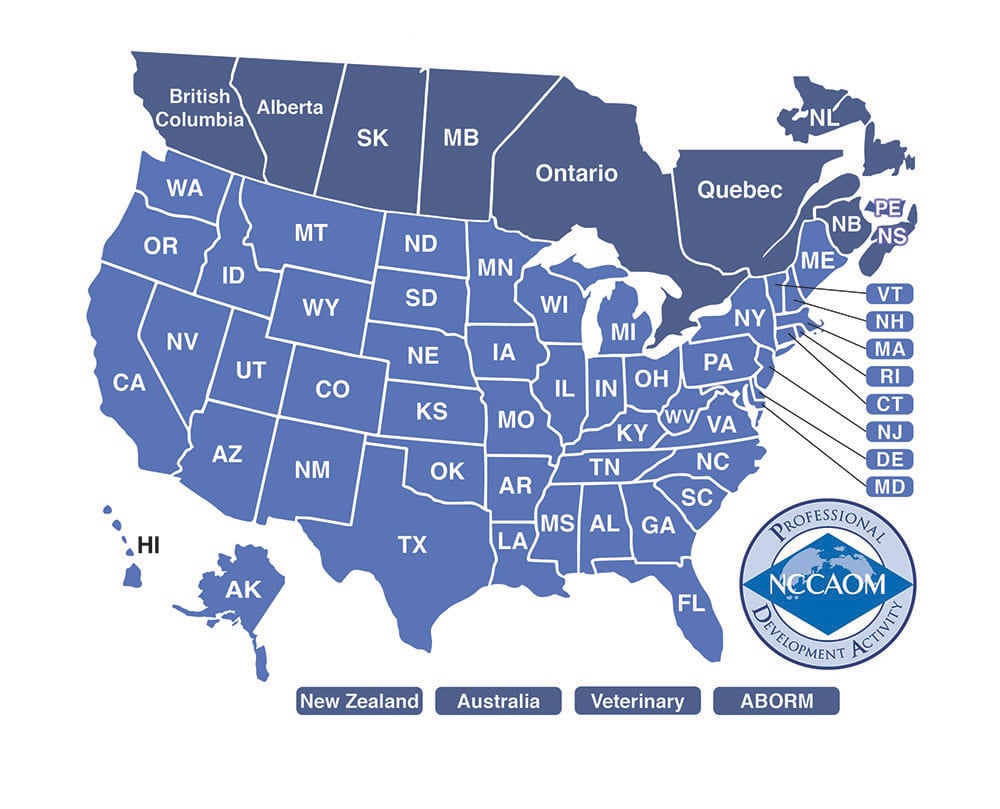Safety
Acupuncture & Pneumothorax Course Excerpt

Sample of Course Materials:
I Introduction
Acupuncture, when performed by a licensed acupuncturist, is safe and effective. Creating a pneumothorax (collapsed lung) through performing acupuncture is an avoidable risk. This can be avoided with a thorough understanding of lung anatomy in relationship to acupuncture points. This course will give an overview of underlying anatomy and give safe needling techniques so that the licensed acupuncture professional need never risk causing a pneumothorax.
II Definition and Mechanism of Pneumothorax
Pneumothorax is defined as the presence of air or gas within the pleural space, the "potential" space between the chest wall and the lung. A compete explanation of the how this causes pneumothorax is presented below.
Between the lungs and the chest wall are two layers of pleural lining, the visceral pleura and the parietal pleura, normally without any space between them. These two layers slide smoothly across each other due to serous fluid within the pleural space.
The function of the pleural space is to constantly maintain lower pressure outside the lungs and within the chest cavity compared to external atmospheric pressure. The difference in these pressures keeps the lungs inflated at all times whether inhaling or exhaling.
Air from outside the pleural space is under higher pressure than the pressure within the pleural space. When pressure within the pleural space increases to match external atmospheric pressure, it causes a partial or complete collapse of the lung.
A pneumothorax can be spontaneous, caused by an underlying disease process or caused by trauma.
There are three ways air can fill this "potential" space:
• Air can enter the pleural space from outside the body, as from a broken rib or other external puncture, including from medical procedures. The potential space between the two layers becomes exposed to external atmospheric air, causing the pressure in the pleural space to equalize with the external atmospheric pressure. The lung collapses due to the loss of normal lower pressure within the pleural cavity compared to external atmospheric pressure.
• Air can enter the pleural space from inside the lung, as from a bleb (explained below) or other underlying weakness in the lung. Even though the air entering the pleural space in this case comes from the lung itself, it originates from and is always connected to the outside atmosphere. Obviously, this air has the same pressure as the external atmosphere and a collapse of the lung results.
• More rarely, gas can accumulate from a bacterial infection inside the pleural space within the pleural fluid. This trapped gas slowly increases pressure within the pleural cavity eventually becoming equal to external atmospheric pressure. The lung collapses.
It is essential to realize that the lung itself does not have to be punctured to cause a pneumothorax. The collapse of the lung is caused by an increase of pressure within the potential space between the visceral and parietal pleura of the lung, most commonly as a result of external air entering the interpleural space.
If only a small amount of external air enters the pleural space, the body can gradually reabsorb it. However, if there is too large an amount of air trapped within this space for the body to reabsorb, surgical intervention will be necessary by aspirating the trapped air with a syringe or placing a chest tube into the pleural space to remove the trapped air.
Primary spontaneous pneumothorax
Spontaneous pneumothorax happens without trauma or intervention and most commonly happens in young people, particularly young men who are tall and thin. Small air blisters known as blebs can form on the surface of the lungs and when one of these blebs spontaneously ruptures, air from the lungs leaks into the pleural space and becomes trapped. While it's unknown why blebs form in some people, they can be compared to a weak spot on a bicycle tire inner tube that ruptures.
Certain preconditions such as smoking, scuba diving, and high altitudes can make an otherwise healthy person more prone to pneumothorax.
Secondary spontaneous pneumothorax
A secondary form of pneumothorax can be caused by underlying lung disease. Underlying chest disease such as lung cancer, COPD, asthma, cystic fibrosis or tuberculosis can make one more prone to pneumothorax and patients with these conditions should be treated with additional caution when needling points in the vicinity of the lungs. A person who has experienced a collapsed lung should also be treated with additional caution as they are more prone to a repeat pneumothorax.
Traumatic Pneumothorax
A lung collapse can be precipitated by trauma such as a car accident, gunshot, knife wound, or air bag deployment. Broken ribs from trauma can cause pneumothorax by either piercing the chest wall and pleural space or by puncturing the lung itself.
Iatrogenic pneumothorax
Iatrogenic pneumothorax is caused by medical examination or procedures such as thoracentesis (biopsy), mechanical ventilation, and incorrect acupuncture technique.
Tension Pneumothorax
Tension pneumothorax is a medical emergency in which the collapsed lung causes severe difficulty in breathing, hypoxia and a severe drop in blood pressure.
Summary
A pneumothorax can occur spontaneously in an otherwise healthy person, most often someone young who is tall and thin. It can be the result of trauma such as a broken rib or may be caused by internal disease such as lung cancer or, more rarely, infection in the pleural space.
Most importantly from our perspective, it can be caused by a medical procedure that introduces air into the pleural space.
As we will see, pneumothorax as a result of acupuncture is rare, particularly in the United States as compared to other countries. It is even more rare when practitioners are adequately apprised of both the proximity of specific acupuncture points to the apices of the lungs and when proper needling techniques are used with these more vulnerable points.
More information in course materials including pictures of X-Rays showing how to read pneumothorax and normal lungs...







